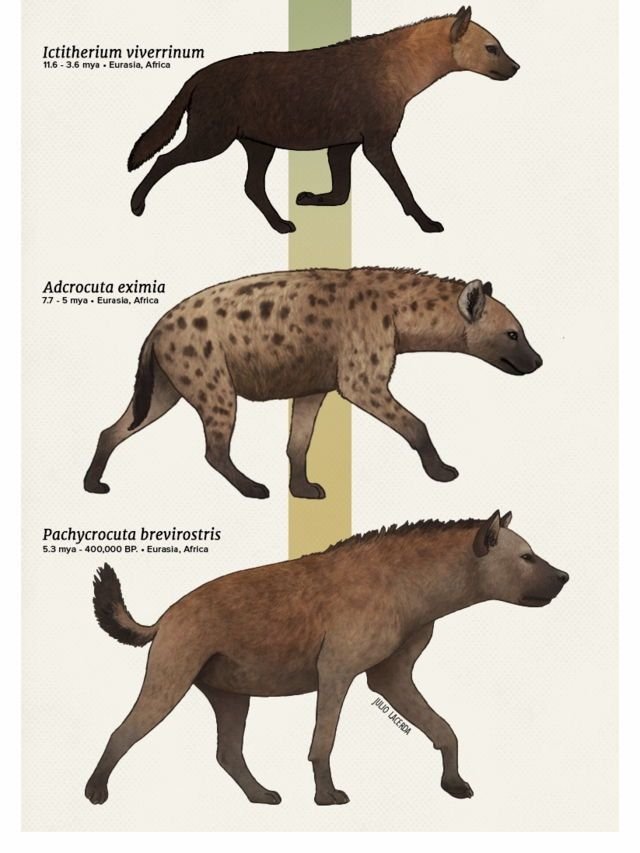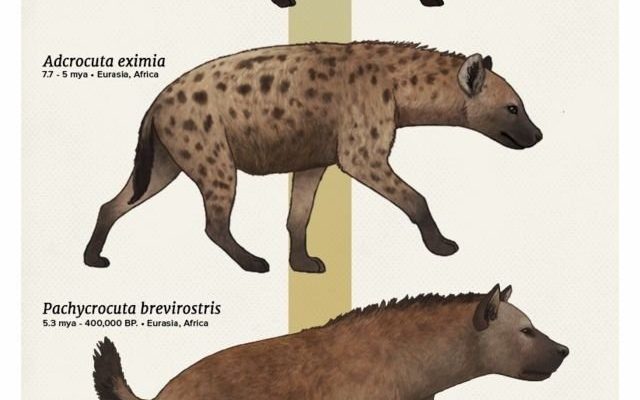
The spotted hyena, with its striking appearance and complex social structures, isn’t just a side character in the animal kingdom; it’s a prominent player. With a blend of intelligence, social dynamics, and physical prowess, these animals offer a great case study on adaptation and survival. So, grab a cup of coffee, and let’s dig into the evolutionary history of the spotted hyena—it might just change how you view these fascinating creatures.
What Are Spotted Hyenas?
Spotted hyenas (Crocuta crocuta) are large, carnivorous mammals found primarily in sub-Saharan Africa. Often recognized by their large stature and distinctive spotted coat, they have powerful jaws that can crush bone. What sets them apart? Well, their complex social structures and vocalizations make them unique among carnivores.
These animals live in matriarchal clans, which can include up to 80 members. The females typically dominate the social hierarchy, creating a unique dynamic that’s quite different from what’s seen in many other species. This structure allows for cooperative hunting and shared resources, showcasing their intelligence and adaptability.
You might be surprised to learn that these animals are not closely related to wolves or other canids. Instead, they share a lineage with cats, making them part of the Feliformia suborder, which also includes animals like civets and mongooses. It’s one of those fun facts that really changes how you view these creatures!
The Early Ancestors of Spotted Hyenas
To understand the spotted hyena’s evolution, we need to go back to their ancestors. The story starts around 20 million years ago with the appearance of early hyenids, which were quite different from what we see today. These ancestors roamed the grasslands and forests of Eurasia and Africa, adapting to a variety of environments.
Over time, these early ancestors branched into different lineages. The Hyaenodon, for example, was a larger predator that existed during the late Eocene to early Oligocene epochs. It was powerful and had teeth designed for slicing flesh, much like today’s hyenas. Although Hyaenodon went extinct, its adaptations laid the groundwork for future hyenas.
Fast forward to about 10 million years ago, and the first true hyenas began to emerge in the fossil record. These creatures began to develop traits that would be essential for survival in the changing environments of Africa. You could almost think of them as the pioneers of the hyena world, adapting to conditions that would shape their future.
The Arrival of Spotted Hyenas
Spotted hyenas as we know them today began to appear around 1 million years ago. During this time, the climate and ecosystems of Africa were changing dramatically. The expansion of the savanna led to a greater abundance of prey, allowing for larger groups of hyenas to thrive.
Their hunting strategies became more sophisticated, emphasizing teamwork and social organization. You might wonder how this works. Well, spotted hyenas are known to work in groups to chase down prey. They can cover long distances and wear out their targets, operating almost like a coordinated team.
What’s fascinating is how their physical features evolved in tandem with their social behaviors. Strong, muscular bodies and powerful jaws allowed them to hunt effectively and scavenge when necessary. They became one of the top predators in their environment, capable of taking down large animals like wildebeests and zebras.
Evolutionary Adaptations
So, how did these spotted hyenas evolve to become such effective hunters and social animals? The answer lies in their unique adaptations. One key feature is their strong, flexible jaws, which can crush bones. This ability allows them to consume nearly every part of their prey, leaving little waste.
Their keen sense of smell and hearing also aids their hunting. Hyenas can detect carrion from miles away and are often the first to arrive at a kill site. It’s like having a built-in navigation system for finding food! This efficiency has helped them thrive in various ecosystems across Africa.
Additionally, their social structure adds another layer of adaptability. Living in clans allows hyenas to share food and protect their young. There’s a saying: “It takes a village to raise a child,” and in the case of spotted hyenas, that couldn’t be more true. The clan system supports the survival of both individuals and the group as a whole, allowing them to flourish in competitive environments.
Hyena Behavior and Social Structure
The social behavior of spotted hyenas is as complex as it is intriguing. Living in matriarchal clans, where females are dominant, creates unique dynamics. Female hyenas not only lead the pack but also have a higher rank than males, which is pretty rare in the animal kingdom.
In these clans, communication is vital. Hyenas have a range of vocalizations, from whoops to giggles, each serving a different purpose. For instance, whoops can signal location, while giggles may indicate excitement or aggression. Honestly, it’s like having an entire language! Their ability to communicate helps maintain social bonds and coordinate during hunting.
You might be wondering how this impacts their survival. These social structures allow for resource sharing, which is crucial during tough times. If one member of the clan makes a kill, it’s common for others to join in, creating a sense of community that strengthens their chances of survival.
The Future of Spotted Hyenas
As fascinating as their past is, the future of spotted hyenas is uncertain. Habitat loss and human encroachment pose significant threats. As urban areas expand and livestock farming increases, hyenas face challenges in finding food and territory.
Conservation efforts are essential to help protect their habitats and understand their role in the ecosystem. Spotted hyenas contribute significantly to the balance of nature, acting as scavengers that help clean up the environment. Losing them would disrupt this balance and could lead to unforeseen consequences.
What can we do? Supporting wildlife conservation organizations and advocating for sustainable practices can help ensure that these remarkable animals continue to thrive. After all, every creature plays a part in our planet’s intricate tapestry, and spotted hyenas are no exception.
The evolutionary history of the spotted hyena is a captivating journey that shows how adaptability, social structure, and unique traits allow a species to thrive. From humble beginnings millions of years ago to their current status as skilled hunters and complex social animals, spotted hyenas are anything but ordinary.
Understanding their past gives us insight into their behavior today, reminding us that every creature has a story worth telling. As we look to the future, it’s crucial to recognize the importance of conserving their habitats and ensuring they have the space to continue their fascinating existence. So, the next time you hear that characteristic laugh echoing across the savanna, remember—it’s a sound that echoes through time, telling the story of survival and adaptation of the spotted hyena.

